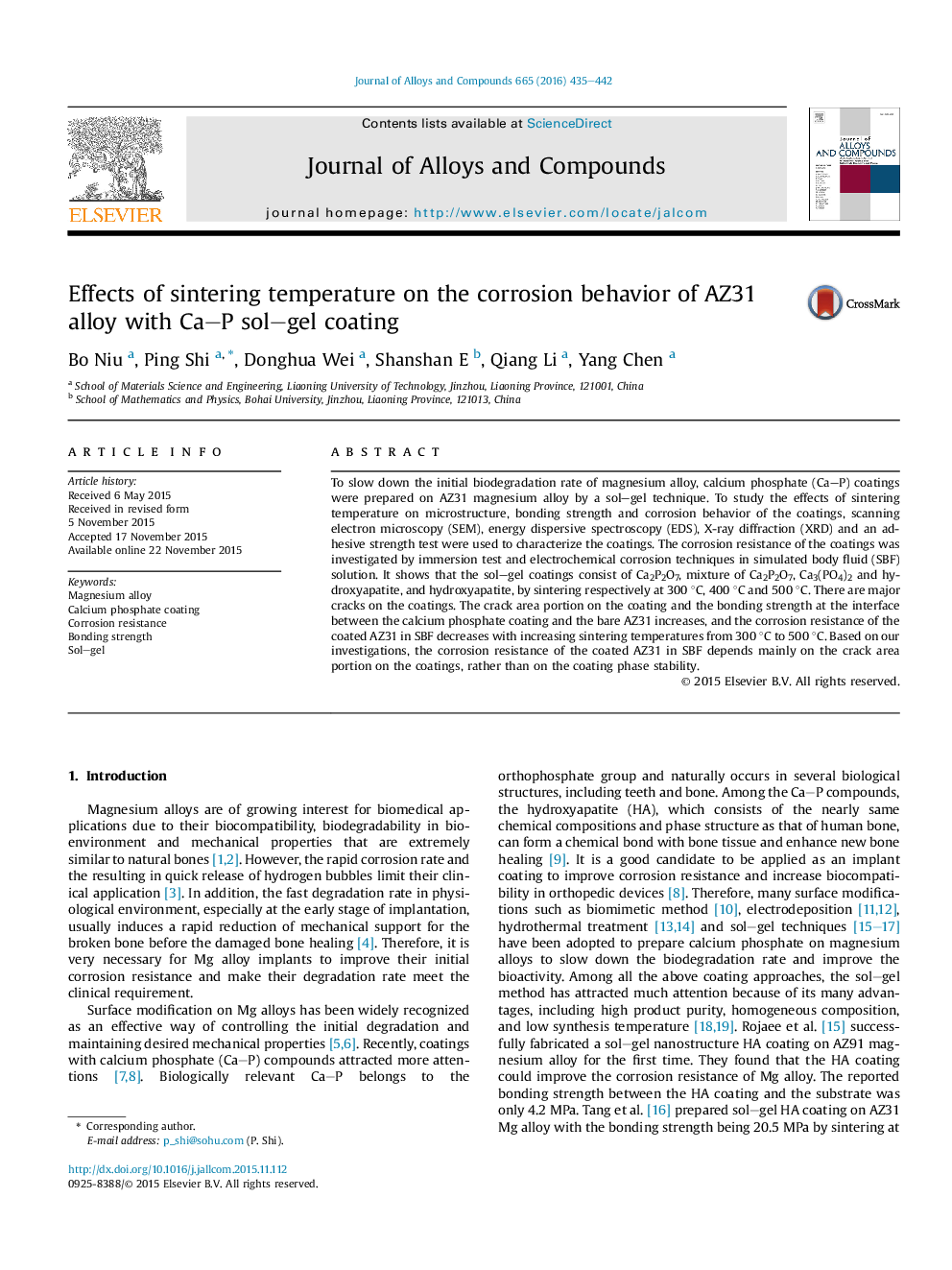| Article ID | Journal | Published Year | Pages | File Type |
|---|---|---|---|---|
| 1606872 | Journal of Alloys and Compounds | 2016 | 8 Pages |
•Ca–P coating was prepared on AZ31 alloy by a sol–gel technique.•Crack area portion in the coating increases with temperatures.•Bonding strength between Ca–P coating and substrate increases with temperatures.•Corrosion resistance of the coated AZ31 in SBF decreases with temperatures.•Corrosion resistance of the coated AZ31 depends mainly on the crack area portion.
To slow down the initial biodegradation rate of magnesium alloy, calcium phosphate (Ca–P) coatings were prepared on AZ31 magnesium alloy by a sol–gel technique. To study the effects of sintering temperature on microstructure, bonding strength and corrosion behavior of the coatings, scanning electron microscopy (SEM), energy dispersive spectroscopy (EDS), X-ray diffraction (XRD) and an adhesive strength test were used to characterize the coatings. The corrosion resistance of the coatings was investigated by immersion test and electrochemical corrosion techniques in simulated body fluid (SBF) solution. It shows that the sol–gel coatings consist of Ca2P2O7, mixture of Ca2P2O7, Ca3(PO4)2 and hydroxyapatite, and hydroxyapatite, by sintering respectively at 300 °C, 400 °C and 500 °C. There are major cracks on the coatings. The crack area portion on the coating and the bonding strength at the interface between the calcium phosphate coating and the bare AZ31 increases, and the corrosion resistance of the coated AZ31 in SBF decreases with increasing sintering temperatures from 300 °C to 500 °C. Based on our investigations, the corrosion resistance of the coated AZ31 in SBF depends mainly on the crack area portion on the coatings, rather than on the coating phase stability.
